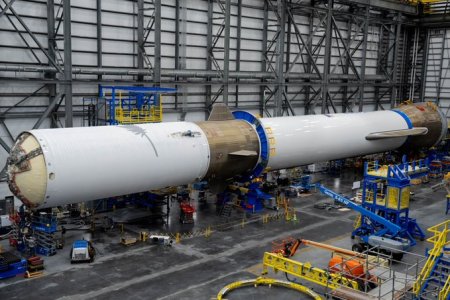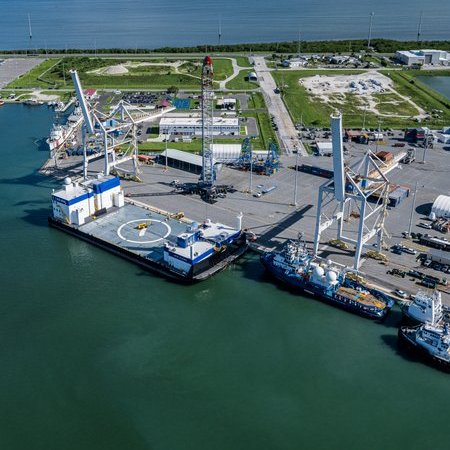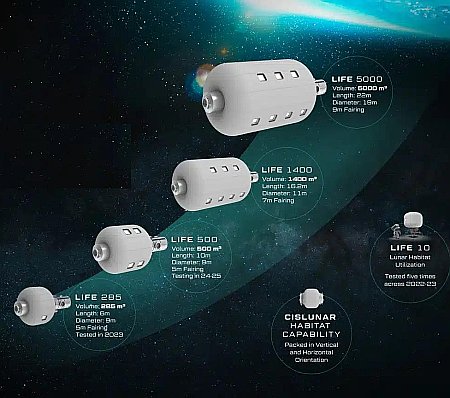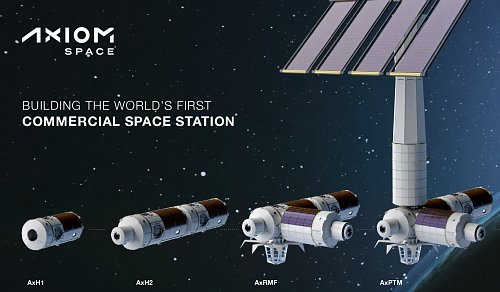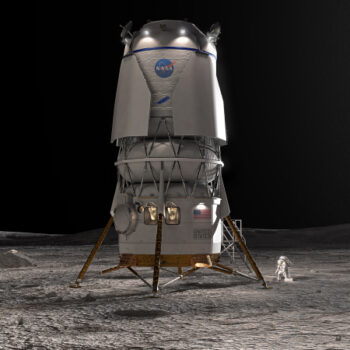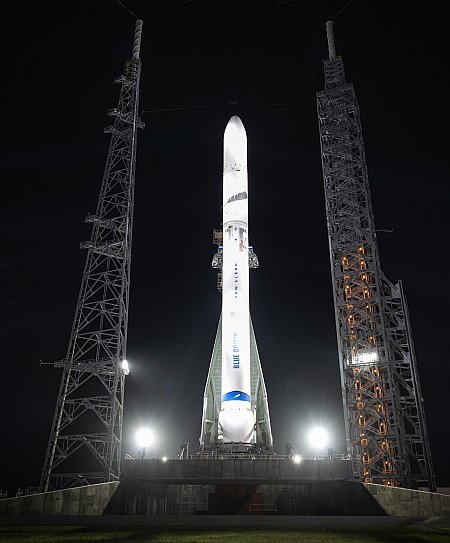New Glenn on the launchpad and vertical for the first time
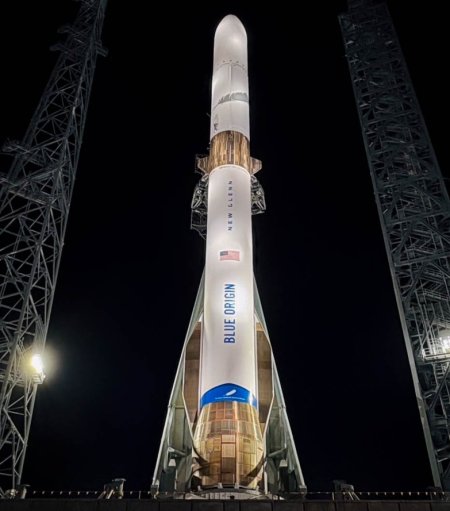
The first completely assembled New Glenn,
on the launchpad
Blue Origin’s first New Glenn rocket to be fully stacked and ready for launch was finally placed vertical on its Cape Canaveral launchpad late November 21, 2024.
For the first time, the company placed a fully integrated, flight-capable rocket on the launch pad Thursday evening. The company rolled the rocket out of the hangar at Launch Complex 36 (LC-36) earlier. A static fire test with the full 98-meter-tall (320 ft) rocket is forthcoming, though a specific date hasn’t been announced.
…The upcoming integrated static fire test would be the first time that Blue Origin fuels a full-assembled. flight-ready New Glenn rocket. It previously conducted a static fire test of its upper stage, which saw a 15-second burn of the two BE-3U engines.
The picture to the right was released by the company that night.
No launch date has been announced. The present payload for this launch is the company’s own Blue Ring orbital tug on a Pentagon-supported test flight. The original payload, two smallsat NASA Mars orbiters built by Rocket Lab, had to be pulled when Blue Origin’s generally leisurely approach meant that it was unable to get the rocket ready in time to meet the October launch window.
That leisurely approach to business will have to end if Blue Origin really wants to compete in today’s modern aerospace industry.

The first completely assembled New Glenn,
on the launchpad
Blue Origin’s first New Glenn rocket to be fully stacked and ready for launch was finally placed vertical on its Cape Canaveral launchpad late November 21, 2024.
For the first time, the company placed a fully integrated, flight-capable rocket on the launch pad Thursday evening. The company rolled the rocket out of the hangar at Launch Complex 36 (LC-36) earlier. A static fire test with the full 98-meter-tall (320 ft) rocket is forthcoming, though a specific date hasn’t been announced.
…The upcoming integrated static fire test would be the first time that Blue Origin fuels a full-assembled. flight-ready New Glenn rocket. It previously conducted a static fire test of its upper stage, which saw a 15-second burn of the two BE-3U engines.
The picture to the right was released by the company that night.
No launch date has been announced. The present payload for this launch is the company’s own Blue Ring orbital tug on a Pentagon-supported test flight. The original payload, two smallsat NASA Mars orbiters built by Rocket Lab, had to be pulled when Blue Origin’s generally leisurely approach meant that it was unable to get the rocket ready in time to meet the October launch window.
That leisurely approach to business will have to end if Blue Origin really wants to compete in today’s modern aerospace industry.

